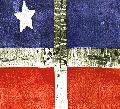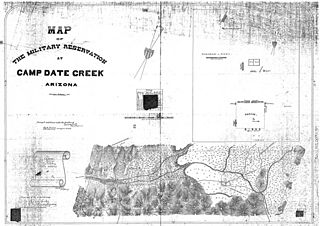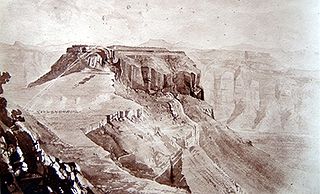 W
WThe Qatari–Bahraini War also known as the Qatari War of Independence was an armed conflict that took place between 1867 and 1868 in the Persian Gulf. The conflict pitted Bahrain and Abu Dhabi against the people of Qatar. The conflict was the most flagrant violation of the 1835 maritime truce, requiring British intervention. The two emirates agreed to a truce, mediated by the United Kingdom, which led to Britain recognizing the Al Thani family of Qatar as the semi-independent ruler of Qatar. The conflict resulted in wide-scale destruction in both emirates.
 W
WThe Battle of Aizu was fought in northern Japan from October to November in autumn 1868, and was part of the Boshin War.
 W
WThe Battle of Avay of 11 December 1868 was one of the last major combat engagements of the Paraguayan War, fought near the Avay stream in Paraguayan territory between the forces the Triple Alliance and the Paraguayan Army.
 W
WThe Battle of Awa occurred on 28 January 1868 during the Boshin War in Japan, in the area of Awa Bay near Osaka. Involving ships of the Tokugawa shogunate and Satsuma vessels loyal to the imperial court in Kyoto, the battle was the second naval battle in Japanese history between modern naval forces. Enomoto Takeaki led the shogunal navy to victory at Awa, in one of the few Tokugawa successes of the Boshin War, one day after the start of the land Battle of Toba–Fushimi.
 W
WThe Battle of Acayuazá was fought on July 18, 1868 on the outskirts of Reduto-Corá between the allied troops of the Triple Alliance and the Paraguayans. This fight triumphed Paraguayan troops.
 W
WThe Battle of Beecher Island, also known as the Battle of Arikaree Fork, was an armed conflict between elements of the United States Army and several of the Plains Native American tribes in September 1868. Beecher Island, on the Arikaree River, then known as part of the North Fork of the Republican River, near present-day Wray, Colorado, was named afterwards for Lieutenant Fredrick H. Beecher, an army officer killed during the battle.
 W
WThe British Expedition to Abyssinia was a rescue mission and punitive expedition carried out in 1868 by the armed forces of the British Empire against the Ethiopian Empire. Emperor Tewodros II of Ethiopia, then often referred to by the anglicized name Theodore, imprisoned several missionaries and two representatives of the British government in an attempt to force the British government to comply with his requests for military assistance. The punitive expedition launched by the British in response required the transportation of a sizable military force hundreds of miles across mountainous terrain lacking any road system. The formidable obstacles to the action were overcome by the commander of the expedition, General Sir Robert Napier, who was victorious in every battle against the troops of Tewodros, captured the Ethiopian capital, and rescued all the hostages. The expedition was widely hailed on its return for achieving all its objectives.
 W
WThe Cretan revolt of 1866–1869 or Great Cretan Revolution was a three-year uprising in Crete against Ottoman rule, the third and largest in a series of Cretan revolts between the end of the Greek War of Independence in 1830 and the establishment of the independent Cretan State in 1898.
 W
WThe Fall of Edo , also known as Edojō Akewatashi (江戸城明け渡し) and Edo Muketsu Kaijō (江戸無血開城), took place in May and July 1868, when the Japanese capital of Edo, controlled by the Tokugawa shogunate, fell to forces favorable to the restoration of Emperor Meiji during the Boshin War.
 W
WThe Fall of Osaka Castle occurred between Imperial and Tokugawa shogunate forces during the Boshin War in Japan, where soon after the Battle of Toba–Fushimi, the Tokugawa-held Osaka Castle was captured by pro-Imperial "Kangun" forces on February 2, 1868.
 W
WThe Glorious Revolution took place in Spain in 1868, resulting in the deposition of Queen Isabella II. The success of the revolution marked the beginning of the Sexenio Democrático with the installment of a provisional government.
 W
WThe Grito de Lares —also referred to as the Lares uprising, the Lares revolt, the Lares rebellion, or the Lares revolution—was the first major revolt against Spanish rule in Puerto Rico. The revolt was planned by Ramón Emeterio Betances and Segundo Ruiz Belvis. It began on September 23, 1868, in the town of Lares, for which it is named, and spread rapidly to various revolutionary cells throughout the island.
 W
WThe Battle of Hakodate was fought in Japan from December 4, 1868 to June 27, 1869, between the remnants of the Tokugawa shogunate army, consolidated into the armed forces of the rebel Ezo Republic, and the armies of the newly formed Imperial government. It was the last stage of the Boshin War, and occurred around Hakodate in the northern Japanese island of Hokkaidō. In Japanese, it is also known as the Battle of Goryokaku
 W
WThe Battle of Hokuetsu was a battle of the Boshin War of the Meiji Restoration, which occurred in 1868 in the northwestern part of Japan, in the area of modern Niigata Prefecture.
 W
WThe Hualapai War, or Walapai War, was an armed conflict fought from 1865 to 1870 between the Hualapai native Americans and the United States in Arizona Territory. The Yavapai also participated on the side of the Hualapai and Mohave scouts were employed by the United States Army. Following the death of the prominent Yavapai leader Anasa in April 1865, the natives began raiding American settlements which provoked a response by the United States Army forces stationed in the area. By the spring of 1869 disease forced the majority of the Hualapais to surrender though some skirmishing continued for almost two more years.
 W
WOn the morning of December 6, 1868, Marshal of the Brazilian Army, Luís Alves de Lima e Silva, Marquis of Caxias, moved with 16,999 infantrymen, 926 cavalrymen and 742 artillerymen, to take Villeta, a Paraguayan city, as a plan to make further attacks on the Paraguayan Army rear. Nevertheless, Paraguayan president and commander-in-chief of the army Francisco Solano López was aware of the landing the Allies had made in the rear of his army.
 W
WIn the history of Portugal, the Janeirinha was the name of the movement which on 1 January 1868 to protest against the tax on consumables and went on to carry out administrative reform of the country. With great support in the cities of Lisbon, Porto and Braga, the movement immediately caused the fall of the government on 4 January. This discontent caused the formation of a new government presided by António José d'Ávila and, for some historians, marks the end of the Regeneration. For, besides the fall of the government, the Janeirinha also brought about a new arrangement of Portugal's political forces, leading to the formation of a new political party, the Reformist Party, opening the doors to a new and prolonged period of governmental instability, and putting an end to the stability imposed by the "regenerador" movement.
 W
WThe Klang War or Selangor Civil War was a series of conflicts that lasted from 1867 to 1874 in the Malay state of Selangor. It was initially fought between Raja Abdullah bin Raja Jaafar, the administrator of Klang, and Raja Mahadi bin Raja Sulaiman. It was joined by Tengku Kudin, as well as Malay and Chinese rival factions. The war was eventually won by Tengku Kudin and Abdullah's son, Raja Ismail.
 W
WThe Battle of Kōshū-Katsunuma was a battle between pro-Imperial and Tokugawa shogunate forces during the Boshin War in Japan. The battle followed the Battle of Toba–Fushimi on 29 March 1868.
 W
WThe Battle of Lomas Valentinas was fought in the Central Department of Paraguay on December 21–27, 1868. The Paraguayan Army, led personally by President Francisco Solano Lopez, were decisively defeated, though he managed to escape. On December 30, 1868, the Paraguayan garrison at Angostura, with 1,907 men, surrendered to the Allies.
 W
WThe Battle of Magdala was the conclusion of the British Expedition to Abyssinia fought in April 1868 between British and Abyssinian forces at Magdala, 390 miles (630 km) from the Red Sea coast. The British were led by Robert Napier, while the Abyssinians were led by Emperor Tewodros II.
 W
WThe Battle of Noheji was a minor battle of the Boshin War of the Meiji Restoration in Japan on November 7, 1868. It is considered a part of the larger Aizu campaign.
 W
WRed Cloud's War was an armed conflict between the Lakota, Northern Cheyenne, and Northern Arapaho on one side and the United States in Wyoming and Montana territories from 1866 to 1868. The war was fought over control of the western Powder River Country in present north-central Wyoming. This grassland, rich in buffalo, was traditionally Crow Indian land, but the Lakota had recently taken control. The Crow tribe held the treaty right to the disputed area, according to the major agreement reached at Fort Laramie in 1851. All involved in "Red Cloud's War" were parties in that treaty.
 W
WThe Siege of Samarkand was a military engagement fought in Samarkand, Uzbekistan in 1868 between the Russian Empire and a combined army of forces from the Bokharan Emirate, and several Uzbek tribes. During the engagement, a Russian garrison successfully repelled multiple attempts by the besieging allied army to storm the city. The Russian victory solidified imperial control over the new state of Russian Turkestan, and caused the partial collapse of the Bokharan Emirate.
 W
WTītokowaru's War was a military conflict that took place in the South Taranaki region of New Zealand's North Island from June 1868 to March 1869 between the Ngāti Ruanui and Ngāruahine Māori tribes and the New Zealand Government. The conflict, near the conclusion of the New Zealand wars, was a revival of hostilities of the Second Taranaki War as Riwha Tītokowaru, chief of Ngaruahine, responded to the continued surveying and settlement of confiscated land with well-planned and effective attacks on settlers and government troops in an effort to block the occupation of Māori land.
 W
WThe Battle of Ueno was a battle of the Boshin War, which occurred on July 4, 1868, between the troops of the Shōgitai under Shibusawa Seiichirō and Amano Hachirō, and Imperial "Kangun" troops.
 W
WThe Battle of Utsunomiya Castle was a battle between pro-imperial and Tokugawa shogunate forces during the Boshin War in Japan in May 1868. It occurred as the troops of the Tokugawa shogunate were retreating north towards Nikkō and Aizu.
 W
WThe battle on the Zerabulak heights is the decisive battle of the Russian army under the command of General Kaufman with the army of the Bukhara emir Muzaffar, which took place in June 1868, on the slopes of the Zera-tau mountain range, between Samarkand and Bukhara. It ended with the defeat of the Bukhara army, and the transition of the Bukhara Emirate to vassal dependence on the Russian Empire.